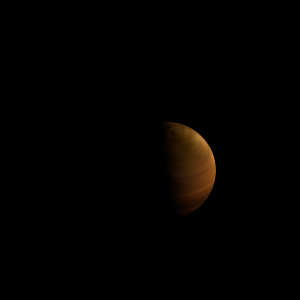|
|
Space Astro
|
Info for exoplanet "Naruhya Ba"
| Scientific (actual) data |
|---|
| Name | K2-55 b |
| Planet status | Confirmed |
| Planet mass | 0.138 |
| Radius | 0.341 |
| Orbital period | 2.84926 |
| Semi major axis | 0.03486 |
| Orbit eccentricity | 0.124 |
| Inclination | 88 |
| Discovered | 2016 |
| Updated | 2021-02-05 |
| Omega | 195 |
| Tconj | 2456980 |
| Tzero tr | 2456980 |
| Impact parameter | 0.37 |
| K | 25.8 |
| Temperature (kelvin) | 900 |
| Publication | Published in a refereed paper |
| Detection type | Primary Transit |
| Mass measurement type | Radial Velocity |
| Radius measurement type | Primary Transit |
| Alternate names | EPIC 205924614.01 |
| Star name | K2-55 |
| Right ascension | 333.75° |
| Declination | -17.25° |
| Mag v | 13.6 |
| Mag j | 11.23 |
| Mag h | 10.615 |
| Star distance | 160.26 |
| Star metallicity | 0.376 |
| Star mass | 0.7 |
| Star radius | 0.63 |
| Star temperature | 4456 |
| Star alternate names | 2MASS J22150046-1715025, EPIC 205924614, WISE J221500.44-171502.7 |
| Wikipedia article | K2-55 b |
Back
| |
| Fictional info (?) |
|---|
| Suggested name | Naruhya Ba |
| Planet type | Small hot gas planet |
| It was the one of the first exoplanets visited by a spacecraft, and one of the first to be successfully landed on.
The two polar ice caps appear to be made largely of dust.
Wind speeds can reach 144 metres per second. |
| Atmosphere | Xenon | 65% |
| Ammonium hydrosulfide (NH4SH) | 25% |
| Argon | 6.8% |
| 2H2O | 2.9% |
| Nitrogen | 0% |
| Atmospheric pressure | 12 bar |
 |
| Moon | Zatsuga Yamyurya | Large potato shaped crater-filled moon |
| Sutsu Nyokya | Large irregular oceanic planetoid |
| Kema Shisu'myo | Large irregular rocky moon |
| Hato-shi | Very small round gaseous moon |
| Kebyo Gehyu Sa | Medium-sized slightly egg-shaped ice moon |
| Putae | Large almost round rocky moon |
| Kenta-ijoma Hyo | Very small potato shaped ice comet |
| Jasha-rosohyo | Very small almost round ice asteroid |
| Kasha-gu | Huge slightly egg-shaped crater-filled comet |
| Zana Chura | Large almost round oceanic asteroid |
| Tohe Guchu-nyo | Small potato shaped ice moon |
| Chiryo | Medium-sized almost round oceanic asteroid |
| Rochuge-gyo | Large slightly egg-shaped oceanic planetoid |
| Zuehyo | Medium-sized round rocky asteroid |
| Nyusu Da | Small slightly egg-shaped ice moon |
| Himasashu Pya | Medium-sized slightly egg-shaped ice moon |
| Sojogya-wachu | Medium-sized round crater-filled moon |
| Robe | Very small potato shaped gaseous planetoid |
| Payonu Nkyu | Medium-sized round gaseous moon |
| Google search for Naruhya ba |
|
Website by Joachim Michaelis
|
|
|
|